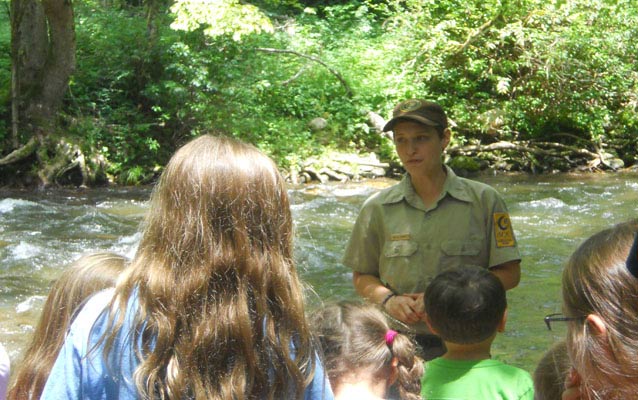Lesson Plan

NPS Photo - Beth Wright
- Grade Level:
- Kindergarten-Second Grade
- Subject:
- Biodiversity, Ecology
- Duration:
- 30 minutes
- Group Size:
- Up to 60
- Setting:
- classroom
- National/State Standards:
- SCIENCE
Ecosystem:
1.L.1
1.L.1.1
1.L.1.2
Earth Systems, Structures, and Processes:
1.E.2
1.E.2.1
1.E.2.2 - Keywords:
- national park service, park ranger, web ranger, Junior Ranger
Overview
The fundamental significance of Great Smoky Mountains National Park is that it is a sanctuary for a remarkably diverse array of native plants and animals, providing a place that students can learn about the different animal groups.This unit is broken into three parts. The overall unit involves a trip to the park and is accompanied by three preparation activities and three wrap-up activities. This is part 3 of the wrap-up activities of the unit.
Objective(s)
1. To teach students about the various aspects of the National Park Service.
Background
Teachers coming on the accompanying field trip should download our complete field trip packet that includes all of the lessons: Have to Have a Habitat pre-site lessons, information and directions about the field trip and Have to Have a Habitat Wrap-up lessons.
Download the full Have to Have a Habitat Field Trip packet (includes Preparation and Wrap-up lessons).
Materials
This lesson includes instructions on how to become a Web Ranger and a Pre and Post Site Test.
-
Explore Your National Parks
Teach students about the various aspects of the National Park Service. Download
-
Have to Have a Habitat - Pre and Post Site Test
Pre site test to be used before the field trip and a post site test to use after the field trip. Download
Procedure
Have the students learn how to become a web ranger for the National Park Service students go to: www.nps.gov/webrangers.
Assessment
Administer a pre and post site test that is included in the unit.
Park Connections
Becoming a junior ranger is a wonderful way to get involved with the park and help protect all the amazing resources of the park.
Vocabulary
National Park Service, Junior RangerLast updated: April 14, 2015
